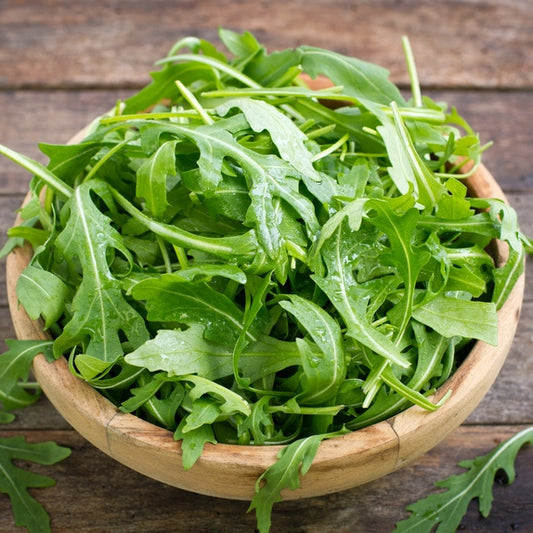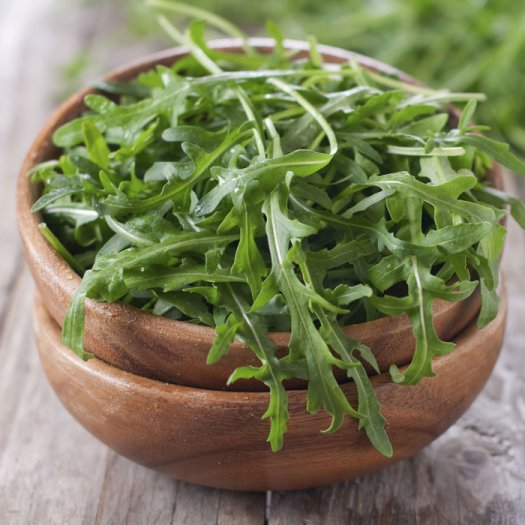-
main-collection-product-grid

Arugula Seeds (Organic) - Rocket
Easy to grow peppery addition to salads and sandwichesArugula Seeds (Organic) - Rocket
Easy to grow peppery addition to salads and sandwichesRegular price As Low As $6.29Regular priceUnit price per -
main-collection-product-grid

Arugula Seeds (Organic) - Wild
Spice adds a delicious and nutritious punch to summer saladsArugula Seeds (Organic) - Wild
Spice adds a delicious and nutritious punch to summer saladsRegular price As Low As $6.29Regular priceUnit price per
Planting the best organic arugula seeds
- A cool season, fast growing leafy vegetable
- Thrives in bright, sunny growing areas
- Great source of vitamin A and can help maintain heart, lung, and kidney function
- Offers a distinctive spicy kick that turns up the flavors in salads, pasta, sandwiches, and sauces
The best arugula for your organic garden
Arugula has been grown and loved since ancient Roman times as a medicinal plant and even as an aphrodisiac. Arugula is now generally recognized as a tasty cruciferous vegetable with a spicy, acidic flavor that is good on its own or in a variety of dishes, particularly in Italian cuisine. Organic arugula comes from the same family as cabbage and mustard, which explains its spicy flavor.
Organic arugula's many health advantages
The leaves are dark green in color and have notches running up and down their sides, making them easily recognizable. Not only are these soft, bite-sized leaves delicious, but they're also packed in beneficial nitrates, polyphenols, calcium, and vitamin K, to mention a few. The list of organic arugula's health advantages is practically infinite when you search it up online. The flavor, on the other hand, is enough to convert most folks to organic arugula all together. Cook it with garlic and olive oil in a skillet, or serve it as a salad with a lemony vinaigrette.
How to plant organic arugula
Wait until early spring, when soil temperatures are between 40°F and 65°F, to plant organic arugula in your garden. Arugula can grow in a variety of soil types and in partial shade. Select a growing place with full light and nutrient-rich soil for a greater chance of success. You may improve nitrogen-deficient soil with fertilizer or compost. Plant your seeds and softly cover them with soil before watering them. In most cases, organic arugula germinates in around seven days. When the seedlings are about an inch tall, thin them out so that each young plant has just three or four inches between them.
Harvesting organic arugula
Arugula takes around 40 days to grow sufficiently to harvest. Arugula seeds thrive in cool conditions and may be collected as a baby green after just a few weeks of development, or mature after five to six weeks. Of course, younger leaves are more sensitive and gentle, but older leaves may be slightly bitter. The use of succession plantings ensures a steady supply of fresh organic arugula leaves throughout the summer. Simply pinch off the outer leaves of the arugula when ready to harvest. You may maintain the plant whole by simply removing the outer leaves, allowing it to continue generating fresh leaves to harvest. The more you pick from the plant, the more it will produce!
For more information about planting, growing, and caring for organic arugula seeds, please see the Arugula Seeds Planting Guide.

